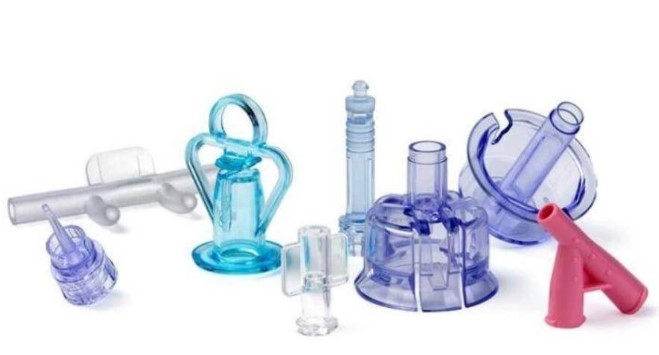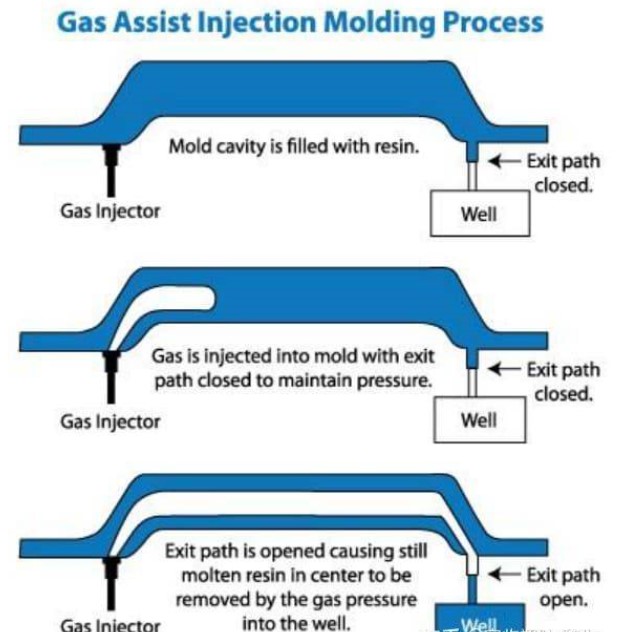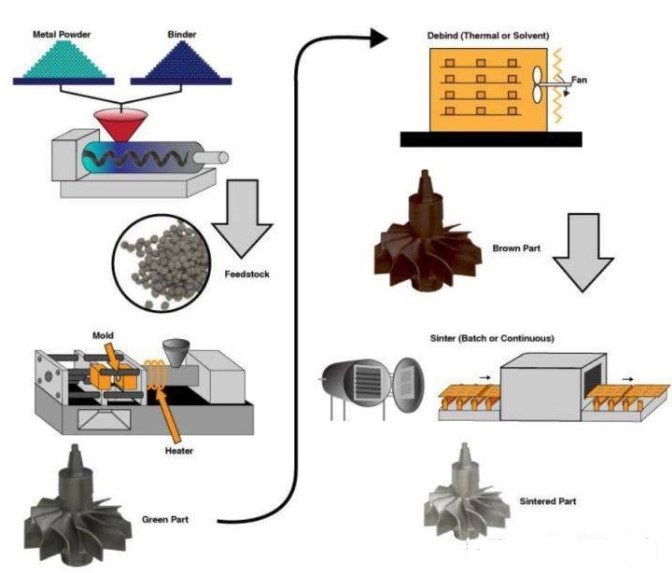One way to produce durable and reliable medical-grade components that meet FDA standards is through medical injection molding. This process is now the procedure of choice for manufacturing the most advanced medical devices because of the myriad of advantages it offers.
Today, we would explain what the medical injection molding process means and its role in the medical industry.

What is Medical Injection Molding?
Medical injection molding is a cheaper and more efficient method of manufacturing medical and pharmaceutical parts, including medical devices, laboratory tools, equipment and test instruments. Medical parts manufactured by this method achieve a high level of precision, quality and accuracy.
I. Advantages of Medical Parts Injection Molding
The medical injection molding process goes beyond similar production procedures in the industry. With its smooth and seamless operation, the process offers many advantages, including but not limited to
01. Multiple Material Options
The injection molding process offers the widest range of options for selecting materials. Although medical injection molding narrows the range of injection molding materials, there are still many materials suitable for manufacturing medical grade parts.
02.Cost-effectiveness
The way the medical plastic injection process is set up helps reduce unnecessary injection molding costs - mass production deliveries and high volume manufacturing help maximize the process. As a result, whenever large quantities of medical injection parts are produced, the injection molding process can reduce the cost per part.
03. Durability
One of the known facts about the plastic used for injection molding is that it is strong and durable. These materials offer stubborn strength and resistance to adverse environments and uses. As a result, products from this process can comfortably withstand heat, blunt force and vibration without any cracks or breakage. In addition, when they are sterilized in an autoclave, they do not succumb to high temperatures.
04. Superior accuracy
Superior accuracy is a most important factor in the injection molding process for the medical device industry. Every inch, millimeter or centimeter can affect the entire molding development due to the tight tolerance range. In addition, skilled injection molding equipment must be used to achieve this high level of accuracy.
05. Resistance to contaminants
The materials used in this production process are easily resistant to the invasion of contaminants. In addition, they do not require much sterilization to remain sterile. Due to this factor, the material easily meets the requirements of FDA standards and other regulations.
II. Application of plastic injection molding in the medical device industry
The application of plastic molding injection molding in the medical device industry is diverse. Medical suppliers use this process because the products can easily meet the required quality and safety standards. In addition, medical device injection molding is useful in the following areas.
- Dental x-ray equipment
- Orthopedics
- Components and devices for drug delivery
- Laboratory supplies, such as test tubes, beakers and other containers
- Surgical instruments and preparation equipment for surgical instruments
- Housings, casings and enclosures for medical and laboratory equipment
III. Materials used for medical injection components
The medical injection molding process uses a variety of material options to manufacture medical and pharmaceutical components. There are a variety of plastic injection molding materials used to make the process efficient. Some of them are:
Polypropylene (PP)
Polyethylene (PE)
Polystyrene (PS)
Polyetheretherketone (PEEK)
Organic silicon
IV. Considerations when choosing medical plastic molding materials
The injection molding process for medical devices is very critical and has a high probability of failure. Therefore, a number of factors need to be considered before and during the design, planning and operation of the process. They include
01. FDA Requirements
For medical component manufacturing, FDA requirements are the target standard in all processes. Sterility and cleanliness regulations are very strict and need to be strictly adhered to. At all stages of production, ensure that all inputs meet or exceed the required standards. For medical grade certification, the factory must pass the standards in the component and manufacturing process.
02. Withstand sterilization processes
Minimum requirements for medical products but important. All enclosure equipment or facility or device components that come into contact with the human body must be resistant to contamination. They should also undergo a sterilization process without being damaged.
03. Operating environment
The ability to withstand adverse conditions is a key consideration for plastic molding materials. They must be reliable and durable when subjected to heat, corrosion, liquids, vibration, and other human movement. Most of the plastics used in this process rank high in this requirement.
04. Durability and strength
There should be no fragile plastics in manufacturing equipment to avoid or minimize biohazards in the medical field. Therefore, each selected material should have a satisfactory durability index before being put into use. More importantly, they should be able to exhibit a high level of tensile strength.
05. General use
Always consider the area in which the material will be used before selection. For example, disposable materials such as syringes, needles, tubing and connectors should be transparent, flexible and easy to sterilize. Similarly, surgical injection components should be lightweight and ergonomic.
V. Common types of injection molding technologies used to manufacture medical devices
Manufacturers offering injection molding services use different plastic molding technologies to produce medical-grade parts. But here, we will examine four common types, which include
- Thin-wall molding
- Gas-assisted injection molding
- Metal injection molding
- Liquid silicone injection molding
01. Thin Wall Molding
Thin-wall molding is one of the most common processes in plastic injection molding for the medical device industry. It is used to produce tools or effects that involve function and patient comfort. The walls of the injected parts of medical devices are much thinner compared to the complete parts. The walls are typically thinner than 1 mm.
Devices manufactured in this manner place high demands on their materials. Although the walls are thin, the device or tool maintains its integrity and durability to a certain extent. Because of these requirements, the base material is often plastic (especially LCP or polypropylene, or even nylon).
The material used in production depends to a large extent on the object being manufactured. These molds (prototypes) undergo extensive testing to ensure their availability.
Devices produced using this type of injection molding include wearable devices, surgical tools, and catheter ablation tools.
02. Gas Assisted Injection Molding
This is a more complex type of molding. When performing conventional molding, thicker parts tend to dry or cure more slowly than thinner walls. The reason for this is that there is not enough pressure to properly pack the resin and make it uniform.

As a result, the resin ends up looking misshapen, unsightly and weaker in structure than it should due to shrink marks. Gas-assisted injection molding is the solution to this problem in plastic injection molding of medical parts.
The process involves passing gas through channels built into the mold. The gas (nitrogen) passes through the middle of these thicker parts. In addition, this creates the pressure needed to press the resin firmly against the mold, resulting in a smooth, structurally sound part with zero shrinkage.
The gas-assisted injection molding method is not suitable for making tools with sharp corners in the design because the gas pressure will decrease if it does not flow in a straight line. However, this type is more suitable for producing complex parts.
03. Metal Injection Molding
The use of metals in medical device manufacturing is a technology that we cannot ignore. The reason for this is that metal devices play an important role when high density, small size and mobility are required. This does not detract from the many uses and benefits of traditional 3D printing, medical plastic molding, or gas-assisted molding.

Typically, atomization technology produces a powder mixture from the desired metal. This powder is made into pellets (feedstock) that contain a binder to make it easier to mold.
After injection, the binder is removed by various methods, including solvents, catalytic processes, hot ovens, or even a combination of these methods. This ultimately leaves a 100% density injection molded part.
04. Liquid Silicone Injection Molding
Some medical devices, such as tubing and breathing masks, are difficult to maintain in a sanitary manner. Therefore, liquid silicone injection molding is usually the most suitable for producing such devices.
The stringent requirements of this process require a sanitary production environment. This environment ensures that no ambient air, dust or moisture is deposited on the mold or mixture as it solidifies. The rubber-like substance produced by this process is highly resistant to chemicals.
Silicone does not react with biological tissue, making it more suitable for safe implantation. However, this injection molding process requires many steps. It also depends on the desired properties of the resulting silicone product.
Conclusion
Team Rapid MFG Co., Ltd has been engaged in plastic injection molding service for many years. We handle everything from plastic mold design and manufacturing to molding, painting, and assembly.















